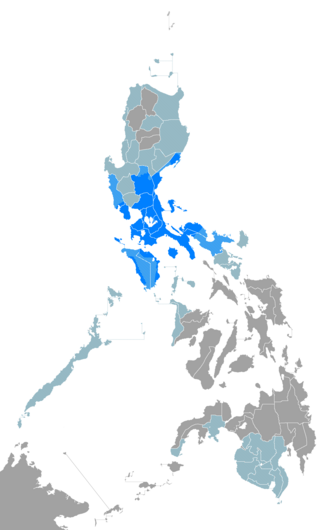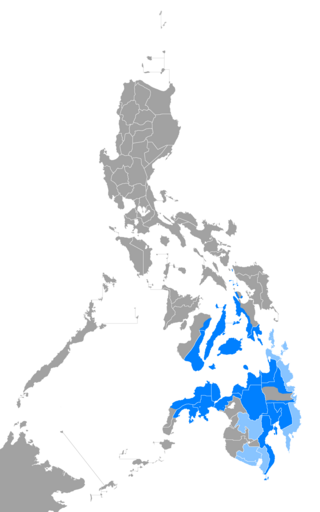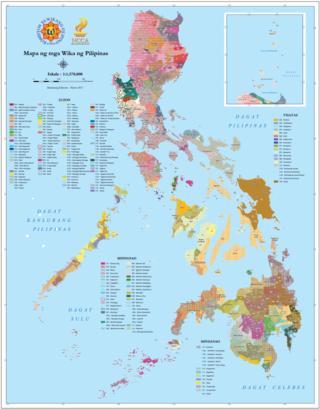| Tagalog | English | Traditional word(s) |
|---|
| ábakús | abacus | ábakó (Sp. ábaco) |
| abnormál | abnormal | di-karaniwan, di-normál (normal = Sp.) |
| abórsiyón [50] | abortion | pagpapalaglág, aborto (Sp.) |
| absent [50] | absent | liban, awsente (Sp. ausente) |
| aders | (from "others") not belonging to a group | ibá, hindî kabílang, hindî kasáma |
| adik | addict | sugapâ, adikto (Sp. adicto) |
| ádmirál | admiral | laksamana, almirante (Sp.) |
| adres | address (computing) | direksiyón (Sp. dirección) |
| adyenda | agenda | palatuntunan, ahenda (Sp. agenda) |
| akáwnt | account (computing) | kuwénta (Sp. cuenta) |
| akawntant | accountant | tagatuos, tagapagtuos, kontador (Sp. contador) |
| ákroním | acronym | akrónimó (Sp. acrónimo) |
| akrostik | acrostic | akróstikó (Sp. acróstico) |
| akses | access | kakayaháng makuha, kakayaháng maabót, kakayaháng makapasok, akseso (Sp. acceso) |
| aksis | axis | painugan, gargaran, ehe (Sp. eje) |
| aktres | actress | artista (Sp.) |
| akwaryum [50] | aquarium | pabiyáy, akwaryo (Sp. acuario) |
| álibáy [50] | alibi | dahilán, reklamo (Sp. reclamo) |
| alumnay [50] | alumni | alumno (m) & alumna (f) (Sp.) |
| ambus [50] | ambush | tambangan |
| amonya | ammonia | amonyako (Sp. amoníaco) |
| ampibyan | amphibian, amphibious | ampibyo (Sp. anfibio) |
| anawnser | announcer | tagapagpahayág, tagapagbalità (radio announcer), anunsiyadór (Sp. anunciador), lokutór (Sp. locutor) |
| apír | (from “up here”) high five | |
| apláy | apply | maglagáy (the act of putting to use or putting one thing to another), isabuhay (to put into practice), gumawa ng aplikasyón (to make an application for) (aplikasyon = Sp. aplicación) |
| áplikánt | applicant | aplikante (Sp. aplicante) |
| áprikót | apricot | albarikoke (Sp. albaricoque) |
| arkipélagó | archipelago | kapuluán |
| ármaláyt | (from “Armalite”) assault rifle | ripleng pansalakay (riple = Sp. rifle) |
| armi | army | hukbô, militar (Sp.) |
| asaynment | assignment | takdáng-aralín |
| atak | attack | salakay, pagsalakay, atake(Sp. ataque) |
| atorni | attorney | abogado (Sp.) |
| aysing | icing/frosting | glaseado (Sp.) |
| ayskrim | ice cream | sorbetes (Sp. sorbete) |
| babay | bye-bye | paalam |
| bádigárd [50] | bodyguard | bantáy, tagabantay, tagapagbantay |
| bádmintón [50] | badminton | |
| badtrip | (from “bad trip”) annoyed | inís, buwisit, asár (Sp.) |
| badyet [50] | budget | gastos (Sp. gasto), gugulín, laáng-gugulin, presupuwesto (Sp. presupuesto) |
| bag | bag | bayóng, supot (paper or plastic bag) |
| baks-opis [50] | box office | takilya (Sp. taquilla) |
| bakwít | evacuee | (mga) lumikas |
| baléy | ballet | balé (Sp. balé) |
| báliból/bóliból | volleyball | boleybol (Sp. voleibol), balonbolea (Sp. balonvolea) |
| ban [50] | ban | bawal, hindi puwede (puwede = Sp. puede), pagbabawal, prohibisyón (Sp. prohibicion) |
| ban/van | van | purgoneta (Sp. furgoneta) |
| bandyo | banjo | banyo (Sp.) |
| bar | bar (business selling alcoholic drinks) | bahay-inuman, taberna (Sp.) |
| baráyti | variety | pagkakaiba-iba |
| barbekyú/barbikyú [50] | barbecue | ihaw (literally “grilling”) |
| barbel | barbell/dumbbell | pesas (Sp. pesa) |
| barker | barker | tagatawag ng pasahero (pasahero = Sp. pasajero) |
| barók | Baroque | baroko (Sp. barroco) |
| bártendér | bartender | tagapaglingkod (ng alak), kamarero (Sp. camarero) |
| báryabol | variable | baryable (Sp. variable) |
| báryant | variant | kaanyo, baryánte (Sp. variante) |
| basket [50] | basket | sisidlán, sesta (Sp. cesta) |
| básketból [50] | basketball | balonsesto (Sp. baloncesto) |
| basted | busted (turned down in a romantic relationship) | wasák ang pusò, tinanggihan |
| basuka | bazooka | |
| batón | baton (staff or truncheon) | batutà (Sp.), bótong |
| bekon [50] | bacon | tosino (Sp. tocino) |
| bertdey | birthday | kaarawán, kapanganakan |
| bes/beshie/bespren | best friend | kaibigan |
| besbol/beysbol [50] | baseball | |
| bétsin | (from "Tien Chun Ve-Tsin") monosodium glutamate | glutamato monosodiko (Sp. glutamato monosódico) |
| beybi | baby (affectionate term for a loved one) | mahál (Sans. महार्घ mahārgha), írog, íbig, sintá (Sans. चिन्ता cintā) |
| bidyo | video | panoorin, bideo (Sp. vídeo) |
| bidyoke | (from "videoke") karaoke | |
| bikini | bikini; swimsuit | |
| bílbord | billboard | karteléra (Sp. cartelera) |
| bílding | building | gusalì, estruktura (Sp. estructura) |
| bilíb | believe (impressed) | hangà, tiwalà |
| bilyard | billiard | bilyár (Sp. billar) |
| bisi | busy | abala, may ginagawa |
| biskuwít | biscuit | galyetas (Sp. galleta) |
| bip-stik | beef steak | bisték (Sp. bistec) |
| blakbord | blackboard, chalkboard | pisara (Sp. pizarra) |
| bláter | police blotter | pagpaparehistro ng sumbong sa pulisya (rehistro = Sp. registro, pulisya = Sp. policía) |
| bodabíl | vaudeville | |
| bodka | vodka | |
| boksing [50] | boxing | bokseo (Sp. boxeo) |
| bold | (from "bold") naked | hubad, tiwangwang |
| boling | bowling | bolos (Sp.) |
| bolpen [50] | ballpoint pen | panulat (any writing instrument that uses ink), pluma (Sp.) |
| boo [50] | boo; to dislike | |
| bos | boss | punò, pinuno, hepe (Sp. jefe) |
| boykot [50] | boycott | boykoteo (Sp. boicoteo) |
| brandi [50] | brandy | |
| bra/brasiyér | brassiere | tapapetso (Sp. tapa pecho) |
| brawnawt | from ("brownout") power outage | pagkawala ng koryente (koryente = Sp. corriente) |
| brip | briefs | panloob na panlalaki, panloob ng lalaki, kalsonsilyo (Sp. calzoncillo) |
| brodkast | broadcast | pagsasahimpapawid |
| brodkaster | broadcaster | tagapagbalita, tagapagsahimpapawid |
| brokoli | broccoli | brekol (Sp. brécol) |
| buldoser [50] | bulldozer | pamungkal-sudsod |
| bumerang | boomerang | bumeran (Sp. bumerán) |
| bus [50] | bus | awtobús (Sp. autobús) |
| daspan | dustpan | pandakot |
| daster | duster (loose dress) | |
| dayagram | diagram | balangkas, banghay, danháy, diyagráma (Sp. diagrama) |
| dáyapér | diaper | lampín |
| daynosor | dinosaur | bawayak-kilabot |
| dedbol | (from "dead ball") dead | nasawi, patáy, pumanaw, sumalangit, yumao |
| detéktib | detective | tiktík, sekréta (Sp. policía secreta) |
| dígri | degree (temperature) | grádo (Sp. grado) |
| dísko | discotheque | sayáwan, diskoteka (Sp. discoteca) |
| dispátser | dispatcher | despatsadór (Sp. despachador) |
| dóbol-ded | double-dead meat | botsà |
| donat | doughnut | bitso-bitsong bilog, roskilya (Sp. rosquilla) |
| dram | drum (a large cylindrical container) | bariles (Sp. barril) |
| drayber | driver | tsupér (Sp. chofer) |
| dribol | dribble (basketball) | pagpapatalbog, patalbugin |
| drowing | drawing | guhit |
| dyaket | jacket | tsaketa (Sp. chaqueta) |
| dyakpat | jackpot | pinakamalaking premyo (premyo = Sp. premio) |
| dyambol | jump ball (basketball) | pagsimula ng laro |
| dyanitor | janitor | tagalinis, tagapaglinis |
| dyas | jazz | |
| dyéneréytor | generator | heneradór (Sp. generador) |
| dyinggel | (from “jingle”) peeing | ihi, pag-iihi |
| dyip/dyipni | jeep/jeepney | |
| dyudo | judo | hudo (Sp. judo) |
| eksit | exit | labas, labasan |
| elebeytor | elevator; lift | asensor (Sp. ascensor) |
| ensayklopidya | encyclopedia | talaalaman, ensiklopédya (Sp. enciclopédia) |
| entri | entry (record listed in a log, diary, website, etc) | lahók |
| epek | effect | bisà, bunga, epékto (Sp. efecto) |
| erkon/erkondisyoner | air conditioner | ayre akondisyonado (Sp. aire acondicionado), klimatisador (Sp. climatizador) |
| ertkweyk | earthquake | lindol, paggalaw ng lupa, pagyayanig |
| eskaleytor | escalator | eskalera (Sp. escalera mecánica) |
| five-six/payb-siks | (from "five-six") (moneylending scheme commonly associated to Indians) | pagpapautang ng pera |
| gadyet | gadget | kagamitán, aparato (Sp.) |
| gang | criminal gang | barkadahang kriminal (barkada = Sp. barcada & kriminal = Sp. criminal) |
| gambol | gamble | pagsusugal (sugal = Sp. jugar) |
| geym | (from "game") ready | handâ |
| gimik | gimmick | pakulô, pakanâ, pakuwela (kuwela = Sp. chulear) |
| golp | golf | |
| gradweyt | graduate | tapós (sa pag-aaral), nagtapós (ng pag-aaral), gradwado (Sp. graduado) |
| grawnded | grounded (confined to one's room for misbehaving) | báwal, pinagbáwalan |
| groser | grocer | abasero (Sp. abacero) |
| gróserí | grocery | abaseríya (Sp. abasería) |
| hani | honey | pulót |
| haló | hello | kumustá (Sp, cómo está) |
| hamster | hamster | |
| hanger | hanger | pansampay |
| hap islip | half slip; underskirt | nagwas (Sp. enagua) |
| hardel | hurdle | luksuhang-hadlang, hadlang, harang |
| hasel | hassle; bothersome | nakaiinis |
| hatdog | hot dog | longganisa (Sp. longaniza), salsitsas (Sp. salchicha) |
| hay | high (drugged) | sabog, basag, bogsa |
| hayblad | (from "high blood") hypertension | altapresyon (Sp. alta presión) |
| háy-iskúl | high school | paaraláng sekundarya (sekundarya = Sp. secundaria); mataás na paaralán |
| haywey | highway | kalsada (Sp. calzada), pangunahing lansangan |
| helikopter/helikapter | helicopter | elikópteró (Sp. helicóptero) |
| hóldap/holdáper | (from "hold-up" or "hold-upper) kidnapper, mugger, robber | maglilíngo, mágnanákaw, mandurukot |
| holen | (from "hole in") marble | marmol (Sp.) |
| holwey | hallway; corridor | pasilyo (Sp. pasillo) |
| ínterbiyú | interview | panayám, entrebista (Sp. entrevista) |
| iskedyul | schedule | talaorasán (oras = Sp. horas), talatakdaan, oraryo (Sp. horario) |
| iskert | skirt | palda (Sp. falda) |
| iskolar | scholar | eskolár (Sp. escolar) |
| iskór | score | marka (Sp. marca), puntos (Sp. punto) |
| iskúl | school | paaralán, eskuwela (Sp. escuela) |
| iskríp | script | sulat (handwritten texts or characters), manuskrito (Sp. manuscrito, text of a stage play, movie, etc.) |
| iskrín | screen | tabing |
| iskuter | scooter | motoneta (Sp.) |
| iskuwater | squatter | (mga) taong naninirahan sa lupà ng iba, (mga) taong nagtitira sa lupa ng iba, (mga) taong naninirahan sa lupang hindi sila may-ari, (mga) taong nagtitira sa lupang hindi sila may-ari, |
| iskrambol | ice scramble | |
| iskuwirel | squirrel | ardilya (Sp. ardilla), buot |
| islogan | slogan | bansag |
| isnáb | snob | |
| isnak | snack | meryenda (Sp. merienda) |
| ispayral | spiral | anyong-suso, ikid, likaw, pilipit, paikid |
| ispeling | spelling | pagkabaybay |
| ispiker | speaker (person) | tagapagsalitâ, tagatalumpatì, mananalita, mananalumpatì, oradór (m) & oradora (f) (Sp.) |
| isponsor | sponsor | tagatangkilik |
| ispórt | sport | palarô, palakasan, paligsahan (also translates as “contest” or “tournament”), deporte (Sp.) |
| ispréy | spray | wisik |
| istak | stock (supply) | panustos |
| istandard | standard | pamantayan, panukatan, norma (Sp.) |
| istroberi | strawberry | presas (Sp. fresa) |
| isyu | issue (controversial topic) | kontrobérsiyá (Sp. controversia), probléma (Sp. problema, problems or concerns), súliránin |
| kabinet | cabinet | aparadór (Sp.) |
| kambas | canvass | pagbibiláng ng boto (boto = Sp. voto) |
| kantin | canteen | kainan, kantina (Sp. cantina) |
| kápiráyt | copyright | karapatáng-sipì, karapatang may-ari, karapatang-akda |
| karat [50] | carat | kilates (Sp. quilate) |
| karot | carrot | asanorya (Sp. zanahoria) |
| karpet [50] | carpet | alpombra (Sp. alfombra) |
| kas [50] | cash | pera, salapi, suki |
| kaswalti | casualty (person suffering from injuries or who has been killed due to an accident or through an act of violence) | biktima (Sp. victima) |
| kendi [50] | candy | minatamís |
| ketsap [50] | ketchup | katsup (Sp. cátsup) |
| keyk | cake | pastél (Sp.) |
| kibord | keyboard | tipaan, teklado (Sp. teclado) |
| klip [50] | clip | ipit, pang-ipit |
| koboy [50] | cowboy | bakero (Sp. vaquero) |
| kodak [50] | Kodak | |
| kolektor [50] | collector | maniningíl, kobradór (Sp. cobrador) |
| komonwelt | commonwealth | malasariling pamahalaan, sampamahalaan |
| kompiyuter [51] | computer | ordenadór (Sp.) |
| kondom | condom | |
| kolek | collect | pag-iipon, pagtitipon, pagkokolekta (kolekta = Sp. colectar) |
| korék | correct | ayos, tamà (Sans. उत्तम, uttama), tumpák, wasto |
| kras [50] | crash | bumagsák, banggaan, lagpakan |
| kudeta | coup d'état | pagtatalsik sa pamahalaan, golpe de estado (Sp. golfe de estado) |
| kukis | cookies | |
| kyut | cute | guwápo (m) & guwápa (f) (Sp. guapo & guapa), lindo (m) & linda (f) (Sp.) |
| lawd-ispiker | loud speaker | palakas-tinig, daktinig, altabos (Sp. altavoz) |
| lebel | level | antás, nibel (Sp. nivel) |
| leybel | label | pangalan |
| leysi | lazy | tamad |
| lobat [52] | low battery | mababang bateryá (baterya = Sp. batería) |
| madyik | magic | salamangka (Sp. salamanca), mahíya (Sp. mágia) |
| mágasín | magazine | diyaryo (Sp. diario) |
| manikin | mannequin | tau-tauhan, maoy |
| maws | computer mouse | ratón (Sp.) |
| miskol [52] | missed call | hindî nasagutáng tawag |
| miting | meeting | pulong, pagpupulong |
| mol/mall | shopping mall | pámilíhan |
| nars | nurse | empermero (m) (Sp. enfermero), empermera (f) (Sp. enfermera) |
| notbuk | note book | kuwaderno (Sp. cuaderno) |
| okey | OK, okay | sige (Sp. sigue) |
| opis | office | opisina (Sp. oficina), tanggapan |
| pakshet/paksyet | fuckshit (obnoxious person) | gago (Sp.), loko (Sp. loco) |
| pakyu | fuck you | putang iná mo (puta = Sp.) |
| panti | panties | panloob na pambabae, panloob ng babae, kalsonsilyo (Sp. calzoncillo) |
| pasword | password | senyas (Sp. señas), kontrasenyas ( Sp. contraseñas) |
| peke | fake | huwad, hindi totoo, palsó (Sp. falso) |
| perstaym | first time | unang beses (una = Sp. & beses = Sp. vez) |
| pesbuk/peysbuk | Facebook |
| piktsur | picture | larawan, imahen (Sp. imagen), retrato (Sp.) |
| plais | pliers | bokay-pato, sagam, alikate (Sp. alicate) |
| plaslayt | flashlight | lente (Sp.) |
| plastik | plastic | plástikó (Sp. plástico) |
| playwud | plywood | tablasusón (tabla = Sp.) |
| pontempen | fountain pen | pluma-de-biyahe (Sp. pluma-de-viaje) |
| potobam | photobomb | pagsingit sa mga larawan |
| pulís | police | pulisya (Sp. policía), magbantáy, bantayán, tagabantay, tagapagbantay |
| putbol | football | |
| rali | rally | martsa (Sp. marcha), pagtulungán, demostrasyon (Sp. demostración) |
| repridyeretor/ref | refrigerator | palamigan, repriheradór (Sp. refrigerador) |
| rebyu/ribyu | review | balik-aral, pagbabalik-aral |
| reispeling | respelling | pagkabaybay ulit |
| rises | recess (education) | duyo |
| robot | robot | |
| salayba | saliva | laway |
| sámpol | sample | halimbawà, muwestra (Sp. muestra) |
| sandwits | sandwich | pinalamanáng tinapay, bokadilyo (Sp. bocadillo), emparedado (Sp.) |
| sarbey | survey | pagsusuri |
| selpon [53] | cellphone | teléponó (Sp. teléfono) |
| sori | sorry | patáwad, paumanhín, pasénsiyá na (pasénsiyá = Sp. paciencia) |
| supermarket | supermarket | palengke, (Sp. palenque), supermerkado (Sp. supermercado) |
| suplay | supply | panustos |
| suplayer | supplier | tagapagtustos, abastesedor (Sp. abastecedor) |
| syota/shota [54] | short time/shawty | kasintahan, nobyo (m) (Sp. novio) & nobya (f) (Sp. novia) |
| tambay | stand by | pag-aansikot, paglalakwatsa (lakwatsa = Sp. la cuacha) |
| trapik | traffic | trápikó (Sp. tráfico) |
| teksbuk | textbook | aklat pampaaralan, aralang aklat, aklat-aralin |
| tenis | tennis | |
| tin-edyer | teenager | lalabintaunin, lalabinggulang, adolesente (Sp. adolescente) |
| titser | teacher | tagapagturo, gurò (Sans. via Malay guru), maestro (m) and maestra (f) (Sp.) |
| tisyert | T-shirt | damit, kamiseta (Sp. camiseta) |
| tisyu | tissue | lamuymoy, himaymay, tehido (Sp. tejido) |
| tráysikél | tricycle | trisiklo (Sp. triciclo) |
| trak | truck | kamyón (Sp. camión) |
| trey | tray | bandeha (Sp. bandeja) |
| tsek | check, checkmark, tick (symbol) | gurlit, pampigil |
| tsekmeyt | checkmate (chess) | pagkatalo sa ahedres (ahedres = Sp. ajedrez), mate [55] (Sp. mate) |
| tses | chess | ahedres (Sp. ajedrez) |
| wais | wise | mautak, tuso |
| websayt | website | pook-sapot, pahinarya (Sp. paginaria) |
| weder | weather | panahon |
| yunit | unit | batayang sukat, pangkat, sambilang |












